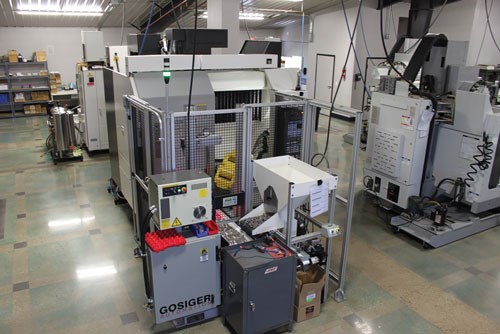Increasing Demand Calls for Automation
This company explored automated processes with a robot they previously purchased but had yet to use.
#Industry40

The robot indexes the parts through the nests, loading a blank and unloading a finished part after each machine cycle, and depositing the finished parts onto a conveyor belt.
Glacier Tool and Die in Stevensville, Montana, recently won a defense contract to make the trigger/hammer assembly for the M16. The contract was for 65,000 pieces, with the possibility that the order could increase in volume. Within the first year, the order increased to 485,000 pieces. The additional volume placed a heavy demand on the equipment and the employees. The company quickly realized it needed to find a way to meet production demands, make it easier on the operators and reduce the overall cost per part.
To find out how Glacier explored automated processes with a robot they previously purchased but had yet to use, and you missed this article in the September issue of PM, read “Fast ROI Convinces Shop to Add Robotic Automation” online here.
RELATED CONTENT
-
Handling Parts In A Robotic Cell
Here’s a review of the workholding and workhandling challenges a shop faces as it moves a part through a robotic cell, from serving up the blanks to the transfer of the final workpiece to post processing and gaging. Productivity, Inc. takes the reader through a few of their cells that they've installed using Fanuc robots and a variety of other machine tool equipment.
-
Making Waves with Lathe Automation
After years of relying on an extensive machining cell for part production, this marine equipment manufacturer has now reduced part handling and improved quality through use of single-setup lathes and automated loading and unloading.
-
Bar Feeder Basics
Some primary factors are often overlooked when considering how to justify the implementation of a bar feeder for turning operations.



